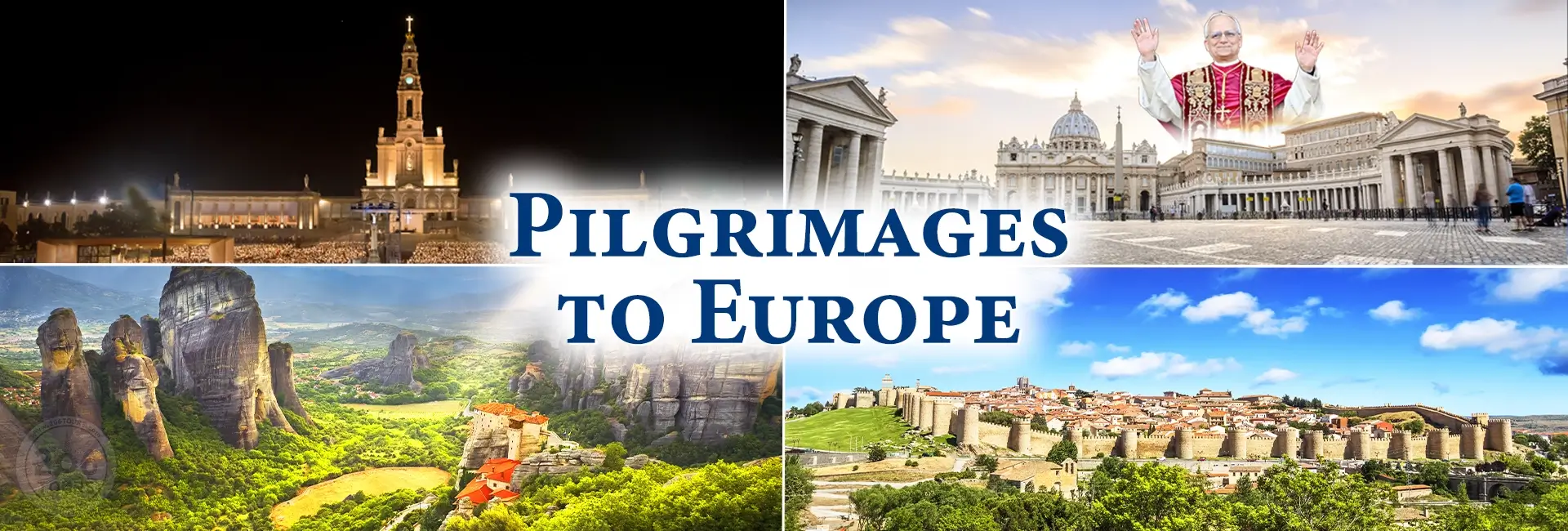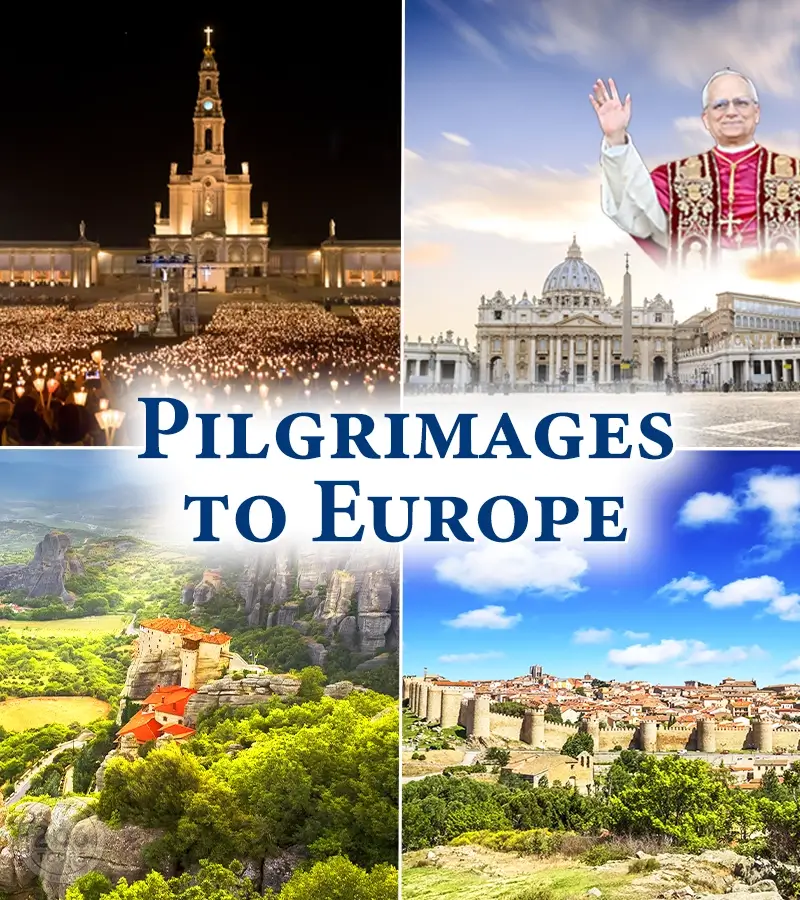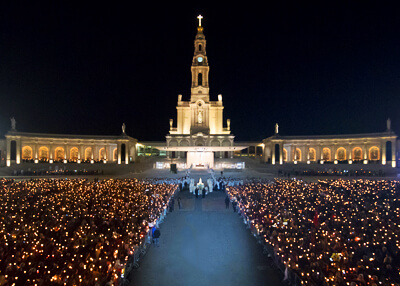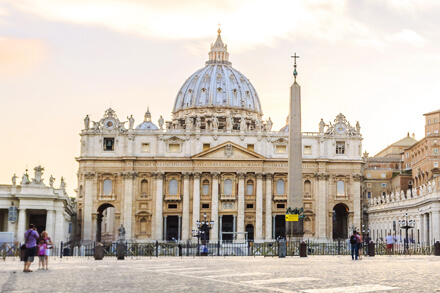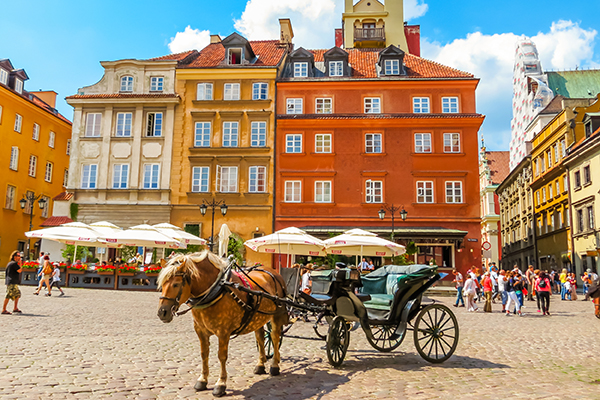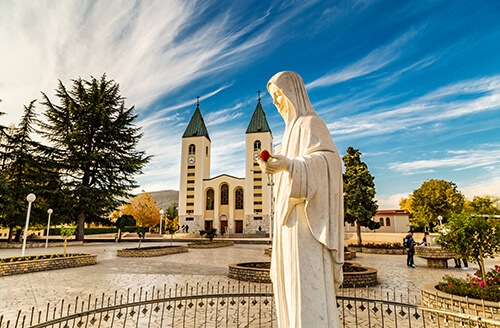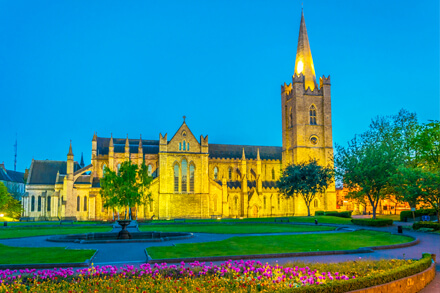Catholic Tours to Europe: A Pilgrimage of Faith and Devotion
For Catholics seeking a deeper connection with their faith, embarking on a pilgrimage to Europe is a profound and transformative experience. The continent is steeped in the history of Christianity, with sacred sites, shrines, and relics that tell the story of Jesus Christ, the Blessed Virgin Mary, and countless saints who lived lives of heroic virtue. Catholic tours to Europe offer an opportunity to walk in the footsteps of these holy figures, to pray where they prayed, and to reflect on the mysteries of our faith in places sanctified by centuries of devotion.
Europe’s Catholic heritage is vast, stretching from the ancient basilicas of Rome to the serene shrines of Fatima. These pilgrimages are not mere vacations but spiritual journeys that invite Catholics to deepen their relationship with God. Whether you’re drawn to the majesty of St. Peter’s Basilica or the quiet humility of a small chapel dedicated to a local saint, these tours provide a structured yet soulful way to experience the richness of Catholic tradition. Each destination offers a unique glimpse into the life of the Church, from its earliest days to the present.
One of the most iconic destinations for Catholic pilgrims is Rome, the Eternal City. As the heart of the Catholic Church, Rome is home to St. Peter’s Basilica, built over the tomb of the first pope, St. Peter, whom Jesus entrusted with the keys to the Kingdom. Visiting the Vatican allows pilgrims to attend Mass in the presence of the Holy Father, venerate sacred relics, and marvel at the beauty of the Sistine Chapel. The nearby Basilica of St. Paul Outside the Walls and the Catacombs of St. Callistus offer further opportunities to connect with the early Christian martyrs who gave their lives for Christ.
Beyond Rome, Italy is a treasure trove of Catholic heritage. Assisi, the birthplace of St. Francis and St. Clare, radiates simplicity and devotion. Pilgrims can visit the Basilica of St. Francis, where the saint’s tomb inspires reflection on his radical commitment to poverty and love for Christ. The town’s cobblestone streets and serene hills invite contemplation, making it a perfect stop for those seeking to emulate St. Francis’s joyful surrender to God’s will. Similarly, the Shrine of St. Padre Pio in San Giovanni Rotondo draws millions to pray at the tomb of this modern saint, known for his stigmata and deep compassion.
France holds a special place in Catholic pilgrimages, particularly the Sanctuary of Our Lady of Lourdes. This sacred site marks the apparitions of the Blessed Virgin Mary to St. Bernadette Soubirous in 1858. Pilgrims flock to the grotto where Mary appeared, bathing in the miraculous spring and participating in candlelight processions. The experience is one of profound healing—spiritual, emotional, and sometimes physical—as pilgrims entrust their intentions to the Immaculate Heart of Mary. Lourdes is a testament to Mary’s role as our mother and intercessor, guiding us closer to her Son.
Another French destination is Lisieux, home to St. Thérèse of the Child Jesus, the “Little Flower.” Her simple yet powerful “Little Way” of holiness resonates with Catholics worldwide. Visiting the Basilica of St. Thérèse and her childhood home allows pilgrims to reflect on her teachings of doing small things with great love. The Carmelite convent where she lived and died is a place of quiet prayer, inviting us to trust in God’s mercy as St. Thérèse did. Her relics and writings continue to inspire pilgrims to seek holiness in everyday life.
Spain’s Santiago de Compostela is a must-visit for those drawn to the legacy of St. James the Apostle. The Camino de Santiago, a centuries-old pilgrimage route, culminates at the magnificent Cathedral of Santiago, where the saint’s relics are venerated. Walking even a portion of the Camino is a powerful act of faith, uniting pilgrims with the countless faithful who have journeyed to this holy site since the Middle Ages. The cathedral’s Botafumeiro, a massive incense burner swung during Mass, is a breathtaking symbol of prayer rising to heaven.
Portugal’s Fatima is another cornerstone of Catholic pilgrimage. In 1917, the Blessed Virgin Mary appeared to three shepherd children—Lucia, Francisco, and Jacinta—delivering messages of repentance, prayer, and devotion to her Immaculate Heart. The Sanctuary of Our Lady of Fatima is a place of deep spiritual renewal, where pilgrims pray the Rosary, attend Mass, and visit the apparition sites. The canonization of Sts. Francisco and Jacinta, two of the youngest saints in Church history, underscores the power of childlike faith in responding to Mary’s call.
Poland, a stronghold of Catholic faith, offers pilgrims the chance to visit the Shrine of Our Lady of Częstochowa. The Black Madonna, a revered icon, has been a symbol of Polish resilience and devotion for centuries. Pilgrims come to pray before this miraculous image, seeking Mary’s intercession in times of trial. The nearby Jasna Góra Monastery, where the icon is housed, is a place of vibrant worship, with daily Masses and confessions that draw Catholics from across the globe.
Kraków, Poland, is another essential stop, particularly for devotees of St. John Paul II. The former pope’s hometown is home to the Divine Mercy Sanctuary, where St. Faustina Kowalska received visions of Jesus and the message of Divine Mercy. Pilgrims can venerate St. Faustina’s relics and pray before the image of the Merciful Jesus. The city’s Wawel Cathedral, where St. John Paul II once served as archbishop, adds a layer of historical and spiritual significance to this vibrant Catholic center.
Ireland, known as the “Isle of Saints and Scholars,” offers a unique pilgrimage experience rooted in its ancient Christian heritage. The Shrine of Our Lady of Knock commemorates the 1879 apparition of Mary, St. Joseph, and St. John the Evangelist. Unlike other Marian apparitions, this one was silent, yet its message of hope and faith resonates deeply. Pilgrims can also visit the ruins of monastic sites like Glendalough, founded by St. Kevin, which speak to Ireland’s role in preserving Christianity during the Dark Ages.
Medjugorje, in Bosnia and Herzegovina, is a more contemporary pilgrimage destination. Since 1981, the Blessed Virgin Mary is said to have appeared to six visionaries, delivering messages of peace, conversion, and prayer. While the Church has not yet fully approved these apparitions, Medjugorje attracts millions of Catholics seeking spiritual renewal. Climbing Apparition Hill or praying at St. James Church fosters a deep sense of communion with Mary and her Son, Jesus.
Germany’s Catholic heritage shines in places like Cologne, home to the stunning Cologne Cathedral. This Gothic masterpiece houses the relics of the Three Magi, making it a unique destination for those reflecting on the Epiphany and Christ’s manifestation to the world. The cathedral’s grandeur, combined with its sacred relics, invites pilgrims to contemplate the mystery of the Incarnation and the universal call to worship Jesus as King.
In Austria, the Marian shrine of Mariazell is one of the oldest and most visited in Central Europe. Dedicated to Our Lady of Mariazell, the basilica houses a miraculous wooden statue of Mary that has drawn pilgrims for over 800 years. The shrine’s serene setting in the Alps makes it an ideal place for prayer and reflection, as Catholics seek Mary’s guidance in their journey toward Christ. The annual pilgrimages to Mariazell are a testament to Austria’s deep Catholic roots.
The Czech Republic offers the Infant Jesus of Prague, a beloved devotion centered on a small statue of the Child Jesus. Housed in the Church of Our Lady Victorious, this image has inspired Catholics worldwide to trust in the humility and power of Christ’s childhood. Pilgrims come to pray for their needs, offering their hearts to the Infant King. The devotion’s simplicity and tenderness make it a powerful stop on any Catholic tour of Europe.
Switzerland, though less known for Catholic pilgrimages, is home to the Abbey of Einsiedeln, a Benedictine monastery dedicated to Our Lady of the Hermits. The Black Madonna statue here, like the one in Częstochowa, is a focal point of devotion. The abbey’s rich liturgical tradition, with its Gregorian chant and solemn Masses, invites pilgrims to enter more deeply into the Church’s sacred worship. St. Meinrad, the abbey’s founder, is also venerated as a martyr and model of monastic life.
England’s Catholic heritage, though diminished by historical upheavals, still offers treasures like the Shrine of Our Lady of Walsingham. This ancient Marian devotion, dating back to the 11th century, was restored in the 20th century and remains a beacon for Catholics in the British Isles. Pilgrims can walk the Holy Mile to the shrine, praying the Rosary and reflecting on Mary’s fiat. The shrine’s ecumenical spirit also invites Catholics to pray for Christian unity, as Jesus desired.
Greece, though predominantly Orthodox, holds significance for Catholics due to its connection to St. Paul. The Apostle to the Gentiles preached in places like Corinth and Athens, leaving a legacy of evangelization. Visiting these sites allows pilgrims to reflect on St. Paul’s tireless mission to spread the Gospel of Christ. The Areopagus in Athens, where Paul delivered his famous speech, is a powerful reminder of the Church’s call to proclaim Jesus in every culture.
Catholic tours to Europe often include opportunities for Eucharistic adoration, daily Mass, and the Sacrament of Reconciliation. These spiritual practices anchor the pilgrimage, ensuring that it is not just a historical or cultural journey but a true encounter with Christ. The Eucharist, as the source and summit of our faith, unites pilgrims across destinations, reminding us that Jesus is truly present in every corner of the Church.
In planning a Catholic pilgrimage to Europe, consider the seasons of the liturgical year. Advent and Lent offer a penitential focus, while Easter and Christmas highlight the joy of Christ’s life. Many tours are tailored to coincide with feast days, such as the Assumption in Lourdes or St. James’s feast in Santiago. Whatever the destination, a pilgrimage rooted in prayer, sacrifice, and devotion will draw you closer to Jesus, Mary, and the saints, transforming your faith for years to come.
Greece: In the Footsteps of St. Paul with Greek Isle Cruise
Thessaloniki * Philippi * Kavala * Kalambaka * Meteora * Delphi * Athens * Corinth * Cruise (Celestyal Cruises) * Mykonos * Kusadasi * Ephesus (Mary’s House) * Patmos * Heraklion * Santorini
| Duration | Destination |
|---|---|
| 11 Days | Greece, Turkey |
Travel to Greece for an eleven day Catholic Pilgrimage in the footsteps of St. Paul! Your trip includes a beautiful three-night Greeks Isle cruise visiting Mykonos, Crete, Santorini, and more! Visit sites from the life of Paul the Apostle like: Phillipi where he delivered his first sermon and established the first Church in Europe; Mars Hill in Athens where he spoke to the Athenians; the site of St. Paul’s trials by Gallio; Corinth and more! Visit Turkey to see the House of the Virgin Mary in Ephesus where she lived until her Assumption according to Catholic Doctrine. A popular Pilgrimage site, this Shrine has even received several papal visits and blessings. Take in the Grecian culture and Catholic history this Pilgrimage has to offer!
Fatima, Spain & Lourdes Pilgrimage
Lisbon (St. Anthony) * Santarem (Eucharistic Miracle) * Fatima * Salamanca * Alba de Tormes * Avila (St. Teresa) * Burgos * Loyola (St. Ignatius) * Lourdes (St. Bernadette)
| Duration | Destination |
|---|---|
| 10 Days | Portugal, Spain, France |
From the time you arrive, you are greeted with the life of St. Anthony of Padua (Patron Saint of Lost Things.) Then you are on your way to Fatima, home of the three shepherd children who witnessed the apparitions of the Blessed Virgin Mary over 100 years ago! Continue through the life of St. Teresa of Avila, and end in Lourdes, a place of true miracles! Here you can pray at the Grotto or immerse yourself in the famous Healing Baths.
Shrines of Italy
Rome · Vatican City (Papal Audience with the Holy Father) · Trevi Fountain · Basilica of St. John the Lateran · Holy Stairs · Basilica of St. Mary Major · St. Peter’s Basilica · Vatican Museum · Appian Way · Basilica of St. Paul Outside the Walls · Catacombs · Monte Cassino · San Giovanni Rotondo (St. Padre Pio) · Monte Sant’Angelo (St. Michael) · Lanciano (Eucharistic Miracle) · Loreto (Holy House) · Orvieto · Assisi (St. Francis)
| Duration | Destination |
|---|---|
| 10 Days | Italy |
This Pilgrimage encompasses some of the holiest Catholic sites that Italy has to offer! In Rome, step foot into the four Major Basilicas, see the Square from the steps of St. Peter’s Basilica, and attend a Papal Audience with his successor, the Pope. In San Giovanni Rotondo, visit sites from the life of St. Padre Pio. In Loreto, visit the “Holy House,” which was the home of the Holy Family that was mysteriously transported to Italy by holy angels. End your pilgrimage with several days of prayer and reflection in the beautiful hometown of St. Francis and St. Clare: Assisi. Here you will also be able to pray at the tomb of St. Carlo Acutis who is the first millennial to have been canonized a Saint!
Poland: In the Footsteps of St. John Paul II & St. Faustina
Warsaw, Niepokalanow, Swinice Warckie, Czestochowa, Wadowice, Zakopane, Krakow, Auschwitz, Lagiewniki (Divine Mercy)
| Duration | Destination |
|---|---|
| 9 Days | Poland |
As you make your way to Poland, Land of Kings, Saints, and Divine Mercy, walk in the footsteps of Saint John Paul II! From where he was born and baptized, to where he became a Priest – Bishop – Cardinal, and where he spent his time visiting as Pope. Take in the Shrine of Divine Mercy (in Lagiewniki) and be drawn closer to the life of St. Faustina and her Divine Mercy message. One of the most obvious works of mercy, and perhaps the most difficult to put into practice, is to forgive others. This pilgrimage will teach, and allow you, to be able to forgive.
Medjugorje
Medjugorje
| Duration | Destination |
|---|---|
| 9 Days | Bosnia and herzegovina |
On June 25, 1981, in the small village of Medjugorje in Bosnia-Herzegovina, the Blessed Virgin Mary began appearing to six young teenagers on Mount Podbrdo, now known as Apparition Hill. Since that time, Our Lady has continued to appear and give messages of hope and a call for conversion in order to bring peace to the world. In response, over 40 million people have journeyed to Medjugorje to experience what many refer to as “Heaven on Earth”. Medjugorje is also known as the “confessional of the world” and has been the site of countless conversions and life-changing experiences.
Ireland
Wicklow, Glendalough, Tipperary, Rock Of Cashel, Kerry, Dingle Peninsula, Shannon, Cliffs Of Moher, Corcomroe Abbey, Galway, Corrib Lake, Clonmacnoise, Knock, Dublin
| Duration | Destination |
|---|---|
| 10 Days | Ireland |
Jet off to Ireland for magical scenery and medieval ruins. You will tour fascinating sites and witness marvels of nature. Take an adventure all around the country to see famous sites such as the Cliffs of Moher and the shrine at Knock. Enjoy the places we have hand-picked to fill your eyes with wonder and your hearts with faith!

